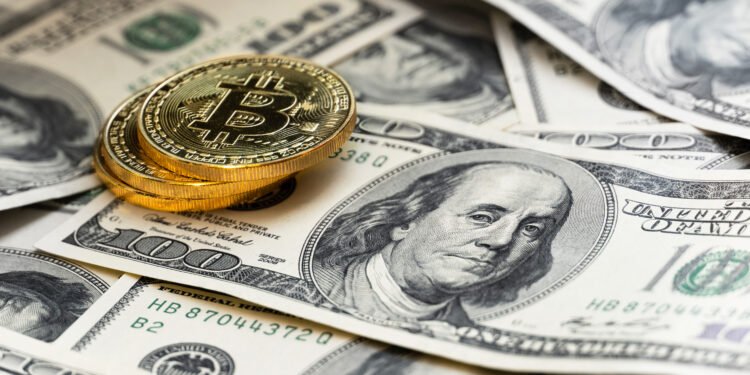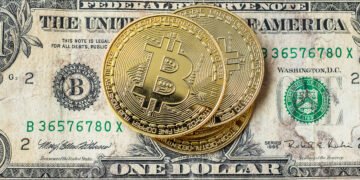There’s a financial instrument generating enormous profits globally that was effectively unavailable to American retail investors until recently. It’s called a perpetual future, and when Coinbase Global received approval from the Commodity Futures Trading Commission in July of last year, it opened the door to a market that has quietly become the dominant force in cryptocurrency derivatives trading worldwide. But the real story here isn’t about crypto gambling—it’s about a potential solution to a $200 billion annual problem plaguing the United States Federal Reserve, and the infrastructure companies positioned to profit from it.
Understanding Perpetual Futures: The Never-Ending Contract
To grasp why this matters, you first need to understand what a perpetual future actually is. Imagine a traditional futures contract, but one that never expires. Traders can speculate on whether Bitcoin or other assets will rise or fall in value, employ significant amounts of leverage to amplify their positions, and never face the awkward settlement moment when the contract expires and they’re asked whether they’d actually like to take physical delivery of the underlying asset. For digital assets like Bitcoin, the concept of physical delivery is somewhat absurd anyway—these are digital tokens, not commodities you can store in a warehouse.
The mechanism that keeps perpetual futures functioning involves what’s known as a “funding rate.” Every eight hours, traders holding long positions (betting on price increases) and those holding short positions (betting on price decreases) exchange payments to keep the perpetual contract price anchored to the actual spot price of the underlying asset. If too many traders are betting on an asset going up, the perpetual futures price tends to rise above the spot price. To correct this imbalance, the funding rate mechanism makes long position holders pay short position holders every eight hours until enough participants decide the cost isn’t worth it and exit their positions. It’s essentially surge pricing applied to leveraged trading—a dynamic adjustment mechanism that keeps the market balanced.
The Quiet Dominance of Perpetual Futures
While financial media outlets have spent years debating whether Bitcoin represents “digital gold” or a speculative bubble akin to the tulip mania of the 17th century, perpetual futures have quietly become the dominant form of cryptocurrency derivatives trading globally. According to current market data, perpetual futures now represent approximately 90 percent of all crypto derivatives trading worldwide. They’ve become the infrastructure layer that few people outside the industry noticed emerging, yet they now constitute the foundation of how sophisticated traders interact with cryptocurrency markets.
The total notional value of trading in this market is staggering. The perpetuals market encompasses $58.5 trillion in cryptocurrency derivatives, representing an enormous financial ecosystem that operates continuously, providing price discovery and liquidity around the clock.
The Federal Reserve’s $200 Billion Annual Problem
To understand why perpetual futures might matter beyond cryptocurrency trading, we need to examine a costly problem at the heart of the United States banking system. The Federal Reserve currently pays 4.15 percent interest on bank reserves—the deposits that commercial banks hold at the central bank. Meanwhile, the assets the Fed acquired during its quantitative easing programs following the 2008 financial crisis earn only 1 to 2 percent. This negative spread costs the Federal Reserve approximately $200 billion annually, and the consequences are real: Treasury remittances to taxpayers stopped in 2022 because the Fed is operating at a substantial loss.
How did we arrive at this situation? The answer lies in the transformation of the banking system’s liquidity management following the 2008 financial crisis.
Every business day, banks need to move enormous sums of money between institutions to settle securities trades and clear derivatives transactions. However, at any given moment during the day, a bank might not have sufficient reserves on hand to make a specific payment, even though it will have adequate funds by day’s end. To prevent the payment system from seizing up, the Federal Reserve provides between $150 billion and $200 billion in temporary intraday credit, known as “daylight overdrafts.” Banks are expected to settle these obligations by the close of business each day.
Before the 2008 financial crisis, banks paid fees for using these overdrafts and managed their liquidity positions carefully to minimize their reliance on intraday Fed credit. When the financial crisis struck, the Federal Reserve’s response involved flooding the banking system with excess reserves through quantitative easing programs. Between 2008 and 2014, the Fed purchased $3.5 trillion in Treasury securities and mortgage-backed securities. Bank reserves exploded from approximately $10 billion to more than $2.7 trillion. With this abundance of reserves, banks no longer needed to carefully manage their intraday liquidity positions—they simply had cash sitting idle.
The unintended consequence is that the Federal Reserve effectively began paying banks not to use a service the central bank was originally created to provide. It’s a perverse outcome where the institution designed to serve as lender of last resort and provide emergency liquidity now subsidizes banks to maintain such large reserve balances that they rarely need emergency liquidity.
The Emerging Liquidity Stress
Recent market data suggests the banking system may be transitioning away from this abundance of reserves. On October 15, amid $40 billion in Treasury settlement activity, banks tapped the Federal Reserve’s Standing Repo Facility for $6.5 billion—the highest non-quarter-end level recorded since the COVID-19 pandemic. Bank reserves have fallen below $3 trillion for the first time in years. Technical indicators like the Secured Overnight Financing Rate and the Treasury General Collateral Repo Rate are showing widening spreads, signaling increased friction in financial intermediation.
The United States financial system appears to be transitioning from what Fed officials call “abundant” reserves to “ample” reserves, and there’s significant disagreement within the Federal Reserve about how to manage this transition and what the appropriate end state should be.
The Fed Policy Debate: Two Competing Visions
This situation has sparked a substantive policy debate between different factions within the Federal Reserve leadership.
Governor Lorie Logan’s approach favors maintaining abundant reserves but shifting the target interest rate from the Federal Funds rate to the Treasury General Collateral Repo Rate. This camp wants to preserve the subsidy structure but make it more efficient and market-based by using the Standing Repo Facility to prevent interest rate spikes during periods of stress. Critics might characterize this as attempting to fix the problems created by the current system while maintaining its essential structure.
Governor Michelle Bowman advocates for a different approach—returning to the pre-2008 model of “scarce reserves,” where banks maintain smaller reserve balances and consequently need to borrow intraday liquidity more frequently. Under this framework, the Federal Reserve would charge actual fees for providing this liquidity, implement surge pricing during periods of stress, and actively manage its balance sheet. Bowman has stated explicitly that “it is not the Fed’s role to replace or arbitrage private-market activities,” arguing that banks should pay for the liquidity they use rather than having taxpayers subsidize their operations.
Federal Reserve Chair Jerome Powell and other officials appear to lean toward Logan’s approach, favoring a strategy of stopping quantitative tightening when reserves reach what they consider a “sufficient” level. Bowman’s position appears less widely supported within the Federal Reserve leadership, though she continues to advocate for reducing the balance sheet until reserves become genuinely scarce.
The Crypto Solution Nobody at the Fed Is Considering
Here’s where the story takes an unexpected turn. The Federal Reserve is already moving toward 24/7 operations for its payment infrastructure. Fedwire, which processes between $3 trillion and $4 trillion in daily bank payments, is being expanded to operate 22 hours per day, six days per week by 2028-2029. If the Bowman camp’s vision prevails and banks begin paying for the intraday liquidity they use, the Fed will need a mechanism to dynamically price that liquidity in real-time.
Traditional Federal Reserve tools are poorly suited to this task. Discount window rates are set by committee meetings. Reserve requirements are adjusted quarterly at best. What the Fed needs is a 24/7 mechanism that can dynamically price intraday liquidity based on real-time supply and demand.
The financial instrument that solves exactly this problem already exists—it just wasn’t invented by central bankers or financial regulators. Perpetual futures trade continuously, 24 hours a day, seven days a week. They adjust their funding rates every eight hours based on actual supply and demand. They provide real-time price discovery for the cost of leverage. And they demonstrably work, as evidenced by their dominance in cryptocurrency derivatives markets.
Academic research has confirmed that intraday liquidity has an implicit price, and that intraday money markets exist even without formal infrastructure. If perpetual futures methodology were adapted to price banking system liquidity, it could provide the dynamic, market-based pricing mechanism the Federal Reserve needs.
The Infrastructure Play: Who Profits?
If this scenario unfolds—if the Federal Reserve adopts a scarce reserves framework requiring 24/7 dynamic liquidity pricing—several companies are positioned to benefit enormously, not from cryptocurrency price speculation but from providing the infrastructure.
Coinbase Global already holds CFTC Designated Contract Market status, making it one of only three entities the regulator trusts with trillion-dollar infrastructure responsibilities. If perpetual futures methodology becomes central to banking system liquidity pricing, Coinbase could evolve into something resembling the Depository Trust & Clearing Corporation for real-time banking liquidity. The company’s shares closed Friday at $354.46, up 38 percent year-to-date.
Circle Internet Group, which issues the USDC stablecoin, could see its business model transform dramatically. Currently, Circle has approximately $76 billion in USDC outstanding, earning Treasury yields on the reserves backing those tokens. If USDC becomes a settlement layer for banking system intraday credit, circulation could expand to $500 billion or even $1 trillion, with Circle earning settlement fees on trillions in banking flows rather than simply interest on Treasury holdings. Circle’s shares closed at $142.05, up 358 percent since its June initial public offering.
Robinhood Markets has emerging exposure to perpetual futures, with the product live in Europe and a United States launch pending. If perpetuals become Federal Reserve infrastructure, retail access becomes politically essential—the Fed cannot create a liquidity mechanism available only to major financial institutions. Robinhood could become the democratization vehicle that makes the entire system politically palatable. Shares closed at $139.79, up 254 percent year-to-date.
The Risks and Reality Check
These infrastructure providers would profit from trading volume and volatility rather than price direction, but they face real risks. Exchange failures remain possible—FTX demonstrated that regulatory approval doesn’t guarantee safety. Regulatory reversal is conceivable; the United Kingdom banned retail crypto derivatives entirely in 2021, and the United States could follow if another major crisis occurs. There’s also execution risk—will trading volume actually migrate to regulated United States venues, or will traders prefer offshore platforms offering higher leverage and minimal compliance requirements?
The fundamental insight remains: in any speculative market, the consistent winners aren’t the gamblers—they’re the infrastructure providers who keep the casino running regardless of who wins or loses at the tables. The smart money has recognized this and shifted from betting on cryptocurrency prices to investing in the plumbing that processes the trades. It’s an old strategy, but it works.
Acknowledgment: This article was written with the help of AI, which also assisted in research, drafting, editing, and formatting this current version.







